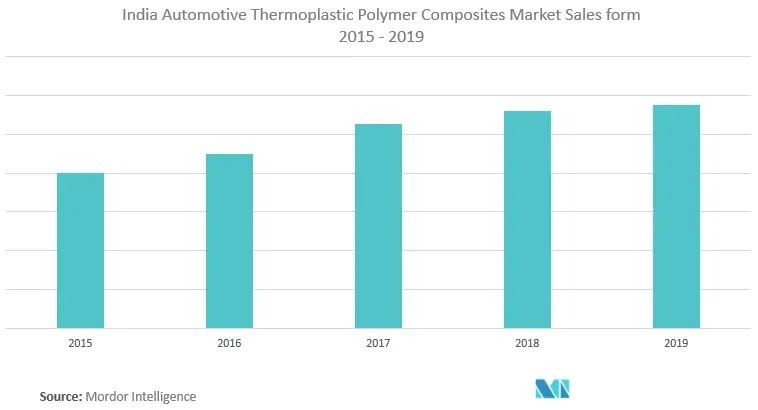Market Trends of India Automotive Thermoplastic Polymer Composites Industry
This section covers the major market trends shaping the India Automotive Thermoplastic Polymer Composites Market according to our research experts:
Glass Mat Thermoplastic (GMT) is Expected to Grow with a Fast Pace
Glass mat thermoplastic sheets were first introduced in 1970. Considering the cost-related mechanical performance criteria, GMT composites are located between injection moldable, discontinues (long or short) glass-fiber-reinforced composites, and advanced thermoplastic with various fiber architecture.
They offer various benefits, such as
Design freedom: Production of complex parts by integrating several functions elements
Low density.
Easy Recycling
High innovation potential, in terms of production and ecological demands.
High productivity
Although GMTs are available in various polymer matrices is dominated by propylene-based composites, due to their low price. These are well capable of competing with other structure materials, primarily in conditions where temperature lesser than 110°C are maintained.
Glass mat thermoplastic composites are witnessing demand from the composite market. They are easy to use, with superior mechanical performance.
Mercedes-Benz selected two grades of glass mat-reinforced thermoplastic material, which are supplied by the Swiss material producer, Quadrant Plastic Composites. These materials are used for manufacturing the innovative front-end module, which was designed for its S-class series luxury coupe. The new front-end module weighs only 3.4 kg, while the previous model used to weigh 5 kg.
Innovations and greater market penetration are expected to drive the demand for glass mat thermoplastic composites during the forecast period.

Transportation Sector to Drive the Market
Indian Transportation industry contributed roughly 6.3% of its GDP and is majorly dominated by the road sector. More than 50% of freight and 90% of passenger traffic are handled by road. The government, private investments, rising exports, increasing interstate movement of goods and passengers, growing FMCG sector, and increasing disposable income are the primary drivers of the transpiration industry in India. To boost India's connectivity, 100% FDI has been allowed in roads and the Highway sector via automatic route.
As the growth in tier 1 and tier 2 cities are increasing, the government is aiming to connect those to major growing major metro cities. New liberalization programs of FDI norms are expected to facilitate entry of new players and thereby encouraging competition in these markets. This will bring higher affordability, especially in the aviation industry. The increasing focus on minimizing carbon emission and enhancement of fuel economy, primarily by reducing the weight of a vehicle, are driving the demand for thermoplastics composites.
Continuous fiber-reinforced thermoplastic composites (CFRTP) are primary materials that can address the rising concerns regarding a vehicle's weight. In combination with metals, CFRTP composites will be a part of a multi-material approach when designing the car of the future. These materials are developed and assembled with recyclability and sustainability in mind. Also, the automotive industry standards will serve to align methods for characterizing the performance of CFRTP composites.
The automotive industry is undergoing a significant transformation. As companies explore various options to address future needs, collaboration has proven to be an effective way to discover the new growth avenues and will leverage risk. The preferred approach is a collaboration with strategic players throughout the value chain.


